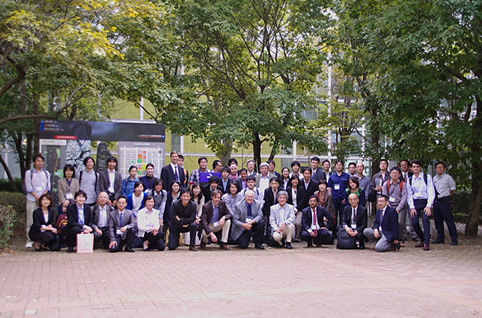Scope:
As the resolution of RCMs increases, the potential of its applicability become higher, but at the same time, many issues hidden under the carpet while the model resolution was lower, become apparent. Here, we focus on the validation, sub-model processes, mechanism of the phenomena, and application. We would like to discuss these various open issues in the workshop. It would be happy for us to find some new seeds of down-scaling research field, through the discussion.
Hereafter we bulletize candidates of topics of the workshop
Topics:
Topic 1: Validation (observation data)
Though we have a super-high resolution RCM, we could not drive it with a high accuracy without validating the model results with the observation data with the same resolution. And also, we need a long time range data if we want to validate the climatic value of them. Here, we introduce many kinds of the observation data which would be candidates for the validation data. For this purpose, we introduce isotope data, remote sensing data as TRMM, radar data, which have over 10 years long data. The potential of using any new kind of observation data would be discussed.
Topic 2: Sub-model processes appeared explicitly in very-high resolution models
As the grid size of the RCM become higher than 5km grid, many physical processes should be handled more carefully than the lower resolution model. For example, cloud micro-physics has become apparent, large eddy become apparent in the ABL model, many sub-grid scale structure of the land surface scheme has become apparent. Also, we have to consider the indirect effect of aerosols. The influence of considering these items should be discussed.
Topic 3: Mechanism appeared in climate change condition (Projection across the scales)
The accuracy of the downscaling data is guaranteed by its research on the climatic mechanism. For example, Asian winter and summer monsoon mainly control the regional climate in East Asia, which are influenced by global-scale climate changes including SST changes. On the other hand, future changes in local-scale precipitation, temperature, snowfall, and snow depth result from the modulated Asian monsoon via the complex orographic effects, the land surface effects including urbanization, and so on. We need to clarify the relations between the global-, regional-, and local-scale phenomena for the interpretation of regional climate changes. To clarify the mechanism on changes of extreme phenomena, for example tropical depressions are also good examples of the topic.
Topic 4: Application (Agenda building with the end-users)
As the horizontal resolution of DS become higher, the applicability of the DS data become large. Also, in the framework of Future Earth, it is encouraged to co-work with the social scientists, sociologists, and end-users of climate change information, to build agenda of how to use the climate change data. Here we focus on the potential and limitation of such application studies.
Scientific committee
- Dr. Izuru Takayabu (MRI)
- Prof. Kei Yoshimura (AORI)
- Dr. Hiroaki Kawase (MRI)
- Prof. Yingjiu Bai (Keio University)
- Dr. Mizuo Kajino (MRI)
Associated program
SOUSEI program, supported by MEXT, Japan
Important Dates
- Deadline for abstract submission:
20 August 2015Closed - Announcement of the program (session schedule): Middle of September, 2015
- Deadline for registration:
20 September 2015Closed
